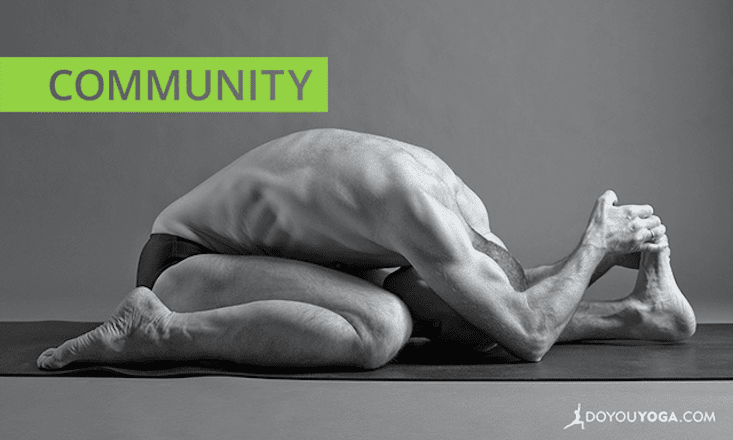Many people are fascinated by Ashtanga yoga for a while, and then many give it up. Teachers complain about high drop out rates in Ashtanga, and it is often dismissed as hard, demanding, or too difficult. I believe the reason for that is that Ashtanga often is taught as a push-yourself-to-the-limit practice and not as a spiritual practice.
Ashtanga yoga asks you to think for yourself, especially when you practice on the Mysore level.
What is Mysore?
Mysore means you have learned at least the Primary Series by heart and that you practice it by yourself in your own tempo and without instructions from a teacher. You can do that alone at home, but most people prefer a Mysore class in a studio, so they can receive adjustments from their teacher and are better motivated by the work of the other students.
Some people choose to stay in guided classes. There they don't have to think about what position comes next or to count their breaths. It is easier to let go and follow directions, but it is also less profound, as one's attention is drawn outside towards the voice of the teacher.
When practicing Mysore, the attention stays inwards, hence the meditative effect is much deeper. Mysore also has the advantage of allowing the individual practitioner to decide how much is enough. In a guided class, one follows the teacher's instructions and tempo; but in Mysore, I can stop any time and hold the asanas according to my breath. Therefore, I'm completely independent and master over my own practice.
The goal of every practice is to complete Primary or Secondary Series, but this doesn't always happen. The body might be injured or tired, or the mind could be upset or greatly disturbed. Then, the practice is a very good exercise in self-awareness. How much can I take today? How far can I go? At what point is my mind shutting down and why? Can I do one more? Is it enough for today?
Exploring Our Limits and Possibilities
David Svenson said once that it's enough practice to roll out the mat and stand on it. Make the effort to start. If you decided at this moment that it's not happening, then that is fine. But most likely, you will do one sun salutation then maybe find the energy to do three or five or eight or all ten. And then more. Or not. What ever you do, that is your practice and enough. Make the effort.
I might only have the time or the energy to do a full series once a week. I envy students who able to do it three or four times a week. When one of them decides at Navasana that it's enough, I never push him or her into going further. Ashtanga students should become independent from their teacher. They come to me so I can help them in their practice, but they don't need me to do their practice.
Delve into Yourself
The goal of Asthanga yoga is self-realization: Realizing what is good and what is bad for me, and what I can do or what I cannot (yet) do. It helps me find where my strengths lie and what my weaknesses are. In this practice, I learn all about myself and this develops my spiritual growth.
So stay away from a teacher who pushes you to things you are not ready for. And stay away from your ego that tells you a real Ashtanga has to complete the Primary Series everyday. Practice what you can and that is enough. Keep in mind what the second yama of Ashtanga yoga is all about: appreciation and contentment of the things that we already have.
This form of yoga practice is interesting for many, many years, or maybe even a lifetime. In my case, no other style or school could hold my attention longer that a few years, but Ashtanga has been with me more than fifteen years and I'm still learning.


